17th Century William and Mary Eight Day Burr Walnut Longcase Clock, John Martin
Sold
Request Information
Follow Us
17th Century William and Mary Eight Day Burr Walnut Longcase Clock, John Martin
The attractive burr walnut-veneered oak case is of classic design for the period and has a warm patina. The formerly rising hood has a shallow caddy, lovely blind fretwork in the frieze, is flanked by plain brass-capped columns and has glazed movement viewing windows to the sides. It is surmounted by three giltwood ball finials. The case has a long trunk door framed by D-mouldings and a rectangular base resting on bun feet. There is an oval lenticle with moulded surround to the trunk door.
The weight-driven eight-day four-pillar movement has going and striking trains. The going train has anchor escapement with a royal pendulum whilst the striking train is regulated by an internal count wheel and sounds the hours on a bell. The 11-inch brass dial has a silvered chapter ring, seconds ring and date aperture in the matted centre and is embellished in the corners by elaborately pierced cherub-head spandrels. It is signed along the bottom John Martin Londini. The time is indicated by a fine pair of blued-steel hands, the hour hand richly pierced.
The maker – John Martin (1659-1709) was apprenticed to well-known maker Joseph Norris, but was transferred to his elder brother Edward not long after, probably because Joseph emigrated to The Netherlands around this time, where he is said to have introduced the longcase clock. In 1681 John Martin is recorded to have been established in Whitegate Alley between Bishopsgate Street and Spitalfield. He took quite a number of apprentices during his career as a clockmaker, the most famous one Edward Brookes. Bracket, longcase and lantern clocks, as well as watches are known by his hand.
Condition
Good. Wear consistent with age and use. The case has been conserved and the movement has been serviced and cleaned.
Dimensions
Height: 87 in. (220.98 cm)
Width: 16.5 in. (41.91 cm)
Depth: 9 in. (22.86 cm)
PREVIOUSLY SOLD
No Results Found
The page you requested could not be found. Try refining your search, or use the navigation above to locate the post.
No Results Found
The page you requested could not be found. Try refining your search, or use the navigation above to locate the post.
YOU MAY ALSO LIKE
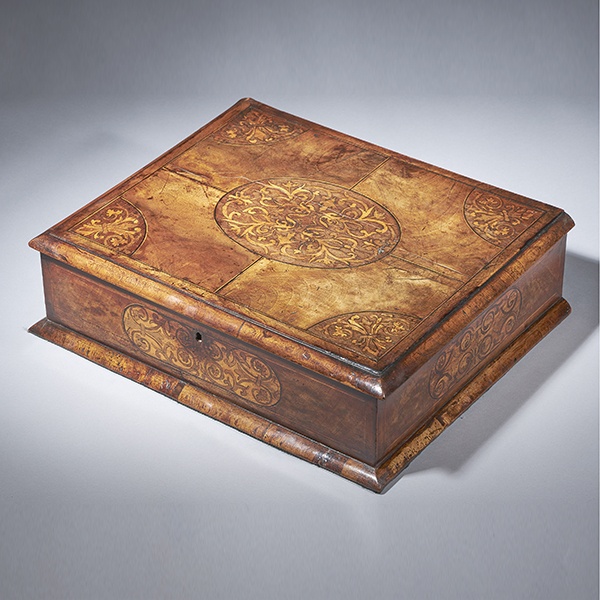
17th Century Figured Walnut and Seaweed Marquetry Lace Box
17th Century Figured Walnut and Seaweed Marquetry Lace Box £3,600 Follow Us17th Century Figured Walnut and Seaweed Marquetry Lace Box A fine and extremely rare figured walnut and seaweed marquetry 'lace box', circa.... let’s break it down -...
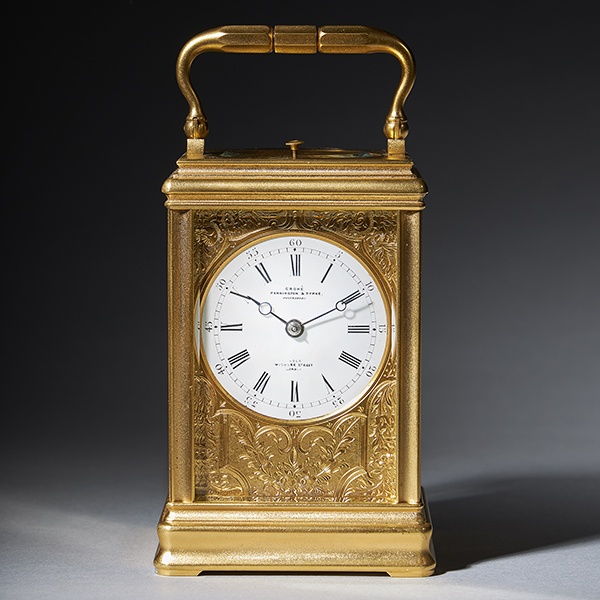
19th Century Repeating Gilt-Brass Carriage Clock by the Famous Drocourt
19th Century Repeating Gilt-Brass Carriage Clock by the Famous Drocourt £5,600 Follow Us19th Century Repeating Gilt-Brass Carriage Clock by the Famous Drocourt A superb repeating carriage clock with a gilt-brass gorge case by the famous maker...
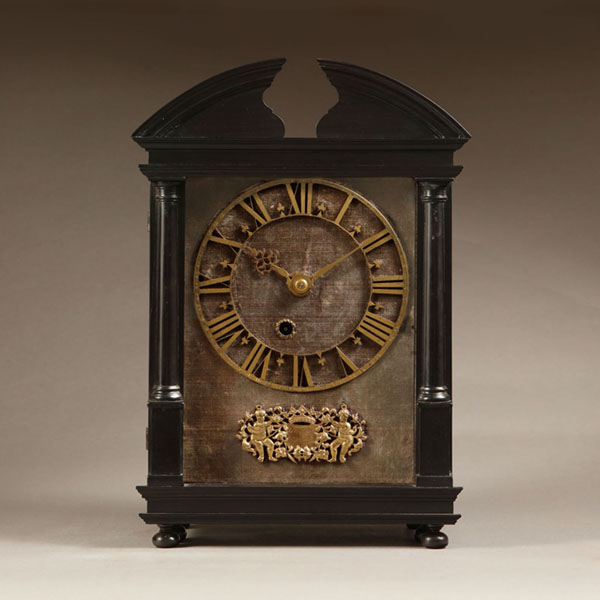
17th-Century Hague Clock Signed by Pieter Visbagh, circa 1675
Small 17th Century Hague clock made c. 1675 by Pieter Visbagh, who was apprenticed by Salomon Coster. The latter made the first pendulum clock according to the instructions of Christiaan Huygens, the internationally renowned scientist who developed the idea of applying a pendulum to a clock movement.
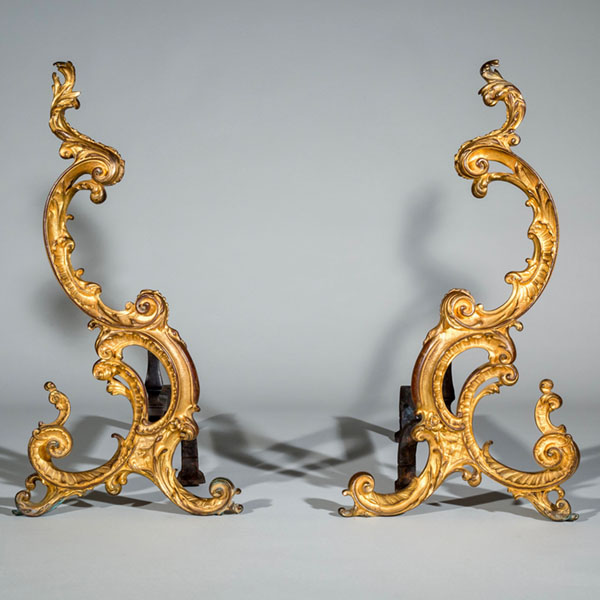
Pair of 18th-Century English Rococo Gilt Bronze Andirons or Firedogs
An exceptional pair of 18th century English Rococo gilt bronze andirons or fire dogs.
The bold shape of these andirons relate to designs of Thomas Johnson (1714–1778), one of London’s pioneers of the ‘Modern’ or French style, later known as Rococo.
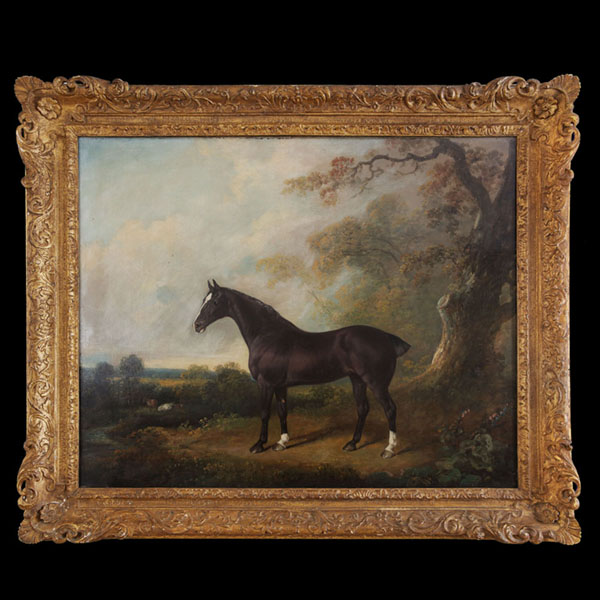
Oil Painting of a Horse Standing Proud in Woodland
Fine Art – Charles Henry Scwanfelder (1774-1837). Signed C H Schwanfelder Pinx and dated 1825. An exceptional portrait of a horse standing proud in woodland, in front of a tree-lined vista incorporating cows residing by a stream.
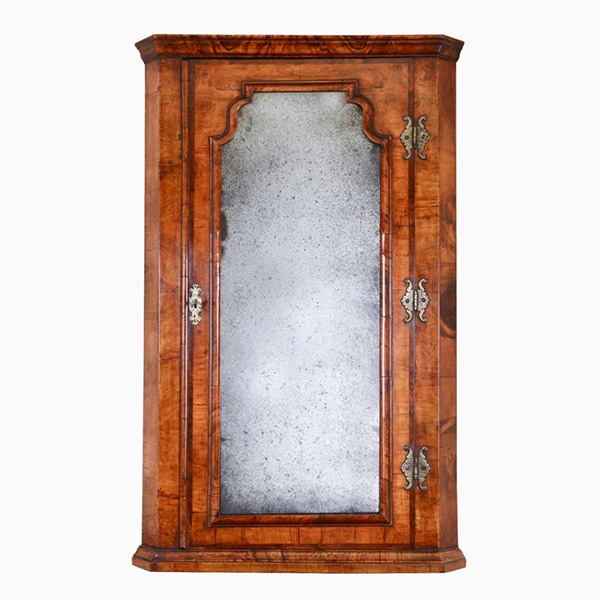
Queen Anne Walnut Corner Cupboard with Bevelled Mirror Plate
A truly remarkable find in original condition. To the door a shaped soft bevelled mirror plate is framed by a cross-grain molding of typical queen Anne design which is further cross-banded, feather-banded and edged to the opening with a single de-molding.

17th Century Figured Walnut and Seaweed Marquetry Lace Box
17th Century Figured Walnut and Seaweed Marquetry Lace Box £3,600 Follow Us17th Century Figured Walnut and Seaweed Marquetry Lace Box A fine and extremely rare figured walnut and seaweed marquetry 'lace box', circa.... let’s break it down -...

19th Century Repeating Gilt-Brass Carriage Clock by the Famous Drocourt
19th Century Repeating Gilt-Brass Carriage Clock by the Famous Drocourt £5,600 Follow Us19th Century Repeating Gilt-Brass Carriage Clock by the Famous Drocourt A superb repeating carriage clock with a gilt-brass gorge case by the famous maker...

17th-Century Hague Clock Signed by Pieter Visbagh, circa 1675
Small 17th Century Hague clock made c. 1675 by Pieter Visbagh, who was apprenticed by Salomon Coster. The latter made the first pendulum clock according to the instructions of Christiaan Huygens, the internationally renowned scientist who developed the idea of applying a pendulum to a clock movement.

Pair of 18th-Century English Rococo Gilt Bronze Andirons or Firedogs
An exceptional pair of 18th century English Rococo gilt bronze andirons or fire dogs.
The bold shape of these andirons relate to designs of Thomas Johnson (1714–1778), one of London’s pioneers of the ‘Modern’ or French style, later known as Rococo.

Oil Painting of a Horse Standing Proud in Woodland
Fine Art – Charles Henry Scwanfelder (1774-1837). Signed C H Schwanfelder Pinx and dated 1825. An exceptional portrait of a horse standing proud in woodland, in front of a tree-lined vista incorporating cows residing by a stream.

Queen Anne Walnut Corner Cupboard with Bevelled Mirror Plate
A truly remarkable find in original condition. To the door a shaped soft bevelled mirror plate is framed by a cross-grain molding of typical queen Anne design which is further cross-banded, feather-banded and edged to the opening with a single de-molding.









